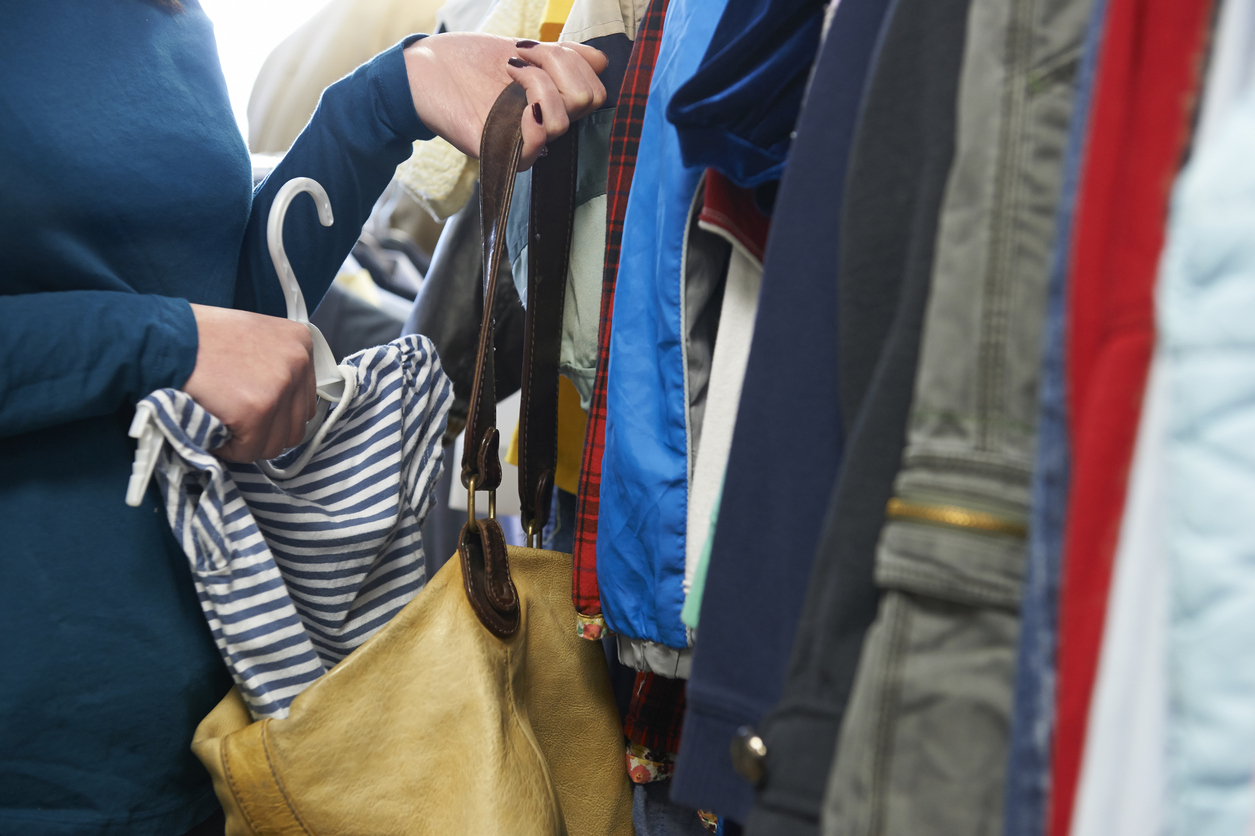
Shoplifting, theft and fraud are big problems for retailers.
To give you some perspective, the National Retail Federation’s National Retail Security Survey found that inventory shrinkage (losing inventory from theft, shoplifting, error or fraud) totaled $50.6 billion in 2018, up from $46.8 billion the year before.
This rise can partly be attributed to the growing overlap between loss prevention and cybersecurity.
While eCommerce is helping retail merchants serve customers anywhere in the world, it’s also a haven for card-not-present transaction (CNP) fraud.
“These are changing times in retail and that means changes in loss prevention,” says University of Florida professor Richard Hollinger. “The challenge is for the honest to stay ahead of the dishonest.”
Let’s address the challenge of shoplifting and loss prevention head-on. In this post, you’ll learn the following:
- The definition of shoplifting
- Common shoplifting signs
- Employee theft
- How shoplifting is punished
- Civil liability for shoplifting
- State-by-state shoplifting laws
- Loss prevention techniques
What is shoplifting?
Shoplifting, or retail fraud, is the removal of merchandise from a store without paying for that merchandise. Having the intent to steal also qualifies as shoplifting. Intent to steal includes things like:
- Changing a price tag
- Removing security tags or other theft-prevention devices
- Putting merchandise in your pockets or bag
- Taking merchandise out of its packaging and concealing it
To spot a shoplifter and prevent them from stealing, however, you need to train your employees to keep an eye out for the telltale signs on your sales floor.
Shoplifting signs
Thieves can be any race, gender or background—there is no standard profile but there are red flags to look out for. It’s important to note that the below characteristics do not imply guilt. Always assume positive intent with people in your store and use our loss prevention techniques to minimize the impact shoplifting has on your inventory shrinkage.
Past offenders
While shoplifters don’t all have the same appearance, you (or other retailers in your area) may already be aware of specific individuals who have or have tried to shoplift from your store.
If you’ve identified an offender after they’ve committed the act, use your security camera footage to capture an image of their face and hang them up in your employee break room so they can keep an eye out.
Likewise, share those images with retailers near you. If you all work together to spot and prevent shoplifters, you all benefit as a result.
Atypical customers
Look out for people that don’t look like your typical customer.
Let’s say you manage a clothing store that caters to middle-aged, female professionals looking for officewear. Teenagers are not your typical clientele—if a group walks in, that’s a red flag.
Oversized clothing or big bags
Anyone wearing baggy clothes or carrying a big bag, whether it’s a backpack, duffle bag, purse or grocery bag, is potentially an offender. If a shoplifter wants to steal as much merchandise as possible, they need something to store it in. Big bags and oversized clothing are great for concealing stolen goods.
Groups
Not all shoplifters are lone wolves. Shoplifters often work as a lifter/distractor too. The distractor(s) job is to distract sales associated by asking them time-consuming questions: finding a specific item, whether or not they have a product in stock, etc. The lifter is the person doing the actual shoplifting. While the distractor keeps sales associates occupied, the lifter steals merchandise.
While it’s good to know the basics and have a watchful eye, never underestimate how wily shoplifters can be; some of them are professionals. Here are a few of their more advanced tricks shoplifters use:
- Razor blades: Some shoplifters carry thin, sharp blades (like razor blades) and use them to remove alarm tags once they’re safely in the changing room.
- Booster bags: Lining a bag with tin foil prevents alarm tags from setting off the detectors around the store exits. It’s an easy way for thieves to quickly load up on merchandise and leave the shop undetected.
Other shoplifting signs
- Watching the staff and security, not merchandise
- Avoiding eye contact
- Loitering near store exits
- Occupying dressing rooms for a long time
Employee theft
Also known as internal theft, employee theft is when an employee steals from the organization where they work.
The National Retail Security Survey found that retailers with 500 or fewer locations reported higher than average losses ($1,377.12) per employee-related case. This is the highest average losses have been over the past five years.
So, what can retailers do to prevent employee theft?
Inventory tracking
Many small businesses don’t use technology to track their inventory. Today, manually tracking inventory is simply insufficient and can result in overstocking. Supply Chain Digest estimated that U.S. retailers are sitting on approximately $1.43 in inventory for every $1 of sakes they make.
When the inventory in your stock room and on your sales floor isn’t accurate, dishonest employees can take advantage of their employer with little fear of consequences.
To prevent the risk of overstocking, retailers need to invest in a retail point of sale with comprehensive inventory management capabilities. Without one, they risk increased shrinkage—and worse, only becoming aware of the discrepancy during their quarterly cycle counts.
Barcodes can also help retailers avoid shrinkage because they help efficiently track inventory with a handheld scanner. If you don’t have once, you can use Lightspeed’s free barcode generator instead.
Generate barcodes in just a few clicks
Use Lightspeed's free barcode generator and keep tabs on your inventory.
Theft prevention techniques
You can take measures to prevent theft by employing the following techniques.
Merchandising security
If you have high-value products in your retail stores like laptops, mobile phones or others, merchandising security is a great way to allow consumers to pick up and test your products while keeping them tethered to your display furniture.
Some retailers use a security stand that mounts on top of their furniture and allows them to display phones, watches, tablets, and cameras while keeping them secure and tethered. Have a look below:
There is a wide range of merchandising security equipment available, from magnetic holders, wired grip holders and others. You can choose which ones are best suited to your products depending on the shape, size, and value of the products you’re safeguarding.
Some merchandising security devices come with in-built chargers so your displayed products are always charged to ensure a great customer experience. You can find these devices (as well as the one above) in electornic stores as well as general retailers like Amazon.
Physical locks and cables also make it harder for thieves to just pinch a product from your shelves. Many retailers put mirrors all around their store, to improve the visibility of displayed products, such that thieves become more conscious of their acts since they feel more ‘watched’. They’re cheaper, non-technical loss prevention devices that can be simple, yet very effective.
Smart inventory management tools
One of the most effective devices to prevent inventory loss, is smart and frequent inventory management. By watching your inventory like a hawk through regular stock counts and monitoring discrepancies, many retailers dramatically decrease theft at their stores. Using smart barcode scanners to do stock takes to accurately account for your inventory levels is helpful.
Another key measure retailers use is by monitoring ‘user permission levels’ of their staff for operating the POS system. Lightspeed allows you to set different permission levels, so only key employees can edit data on your system.
Taking these steps will ensure you know when something goes missing, which prevents culprits from stealing your products!
Anti-theft signage
You need to tell customers they’re being watched, and what the consequences of shoplifting can be. Through installing anti theft signage across the entire store, retailers instantly warn potential thieves from acting unlawfully. Here’s an example of an effective signage tool:
Again, a simple, cost effective tool that does the trick!
Display locks
In some cases, you may want to prevent people from taking products from a display. Maybe the merchandise is valuable or prone to theft. Whatever the case, you can keep them secure with display locks, such as peg hook devices.
Peg hook locks can prevent sweep theft. You attach them to the hook of your display and they can only be unlocked using a magnetic removal tool.
Another option is to use lockable glass or acrylic displays. These are clear retail display cases that can showcase your products so shoppers can still view them.
Perfect from high-value items like jewelry, these cases can typically be unlocked with a key, so shoppers would have to approach a staff members if they want to touch an item in the case.
Cameras & video analytics
Surveillance cameras at key points around your retail store, complemented by video analytics software can be a fantastic theft prevention formula. The software identifies whenever any kind of suspicious movements occur, like if a customer walks out the door without paying, You’ll instantly get an alert if this happens.
With information on demographics, incoming & outgoing people count, and heatmaps for more advanced visitor analytics, you can pinpoint the likelihood of theft with greater accuracy.
If you use cameras with facial recognition technology, it becomes easy to identify ‘known’ thieves, by matching them against an existing database of criminals or thieves supplied to you by the police.
Electronic Article Surveillance (EAS)
By attaching security tags to your products, retailers can trigger off an alarm if a shoplifter walks out with a product with the tag still on through the electronic sensors at the exit gates.
There are many types of EAS devices you can use like tags, labels, antennas, spider tags and more. They use a combination of radio frequency, electromagnetic technology, sensors, metal detectors to prevent theft. The best ones are the ones that cause the minimum number of false alarms!
Educational materials for theft prevention
One of the best ways to curb theft is through education. Keep your team well-informed of the latest loss prevention best practices so they can help secure your store.
You also want to educate your staff and contractors about their code of conduct, so they’re aware of the consequences they need to face. By making them take eLearning programs and induction modules when they join your company, you set the right foundation for controlling theft from the start of their tenure.
Take action to prevent shoplfting
While there’s no way to stop shoplifters and theft entirely, the right tactics, training and technology can help you minimize your losses from inventory shrinkage.
Use the tips and resources above to effectively spot shoplifters, prevent them from stealing, prosecute offenders within your rights and keep your retail business safe.

News you care about. Tips you can use.
Everything your business needs to grow, delivered straight to your inbox.




